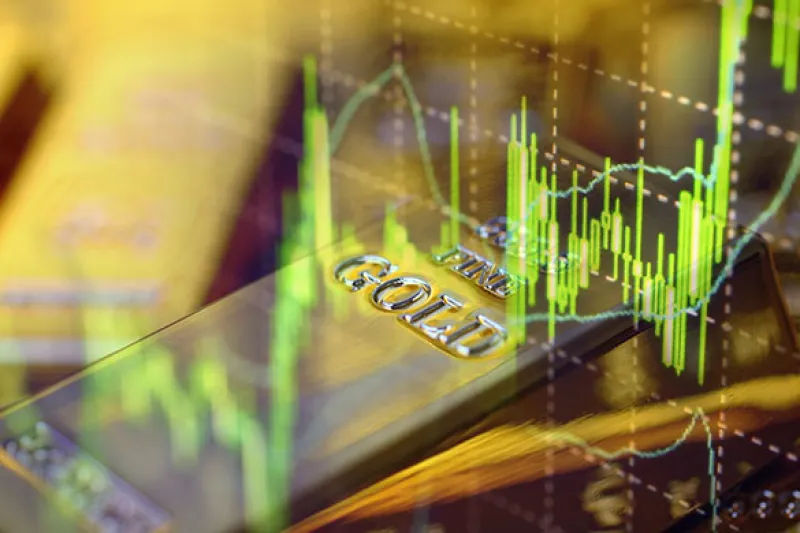Gold-backed ETFs and similar products (gold ETFs) recorded their tenth consecutive month of net inflows during September, matching equivalent stretches seen in 2008 and 2016.1
Gold ETF holdings increased by 68.1 metric tons (t) (US$4.6bn), or 2% of AUM despite gold’s worst monthly price performance since November 2016. Global net inflows of 1,003t (US$55.7bn) in 2020 have led overall gold investment demand and taken the gold ETF holdings universe to a fresh new all-time high of 3,880t and US$235bn in AUM.2
Regional overview
Gold was one of several major assets, including stocks and broad-based commodities, that started the quarter strongly, reversed course in September, but closed the quarter higher. This was mirrored by a stronger U.S. dollar that finished the quarter nearly 4% lower.
North American funds led global inflows once again, up 34.6t (US$2.2bn, 1.8% AUM). After seeing outflows in August, European funds added 26.0t (US$1.9bn, 2.0%) in September. Asian funds added 6.8t (US$432mn, 5.9% AUM) as two new funds launched in China for a second straight month, bringing the total number of new funds in the region to seven this year. Safe-haven demand and strong y-t-d returns in the domestic gold price fostered Indian fund inflows during the month. Finally, funds listed in other regions experienced small inflows of 0.6t (US$23mn, 0.6% AUM).
Strong Q3 inflows
Gold ETF holdings grew 7% during the third quarter, adding 273t or US$16.4bn in assets as the price of gold finished nearly 7% higher during the same period. North American funds remained the primary recipients of inflows. However, inflows in Asia stand out, as the region grew holdings by 17% and four new funds listed in China. Assets in Europe and other regions grew by 3% and 9% respectively.
While investors are clearly embracing gold as evidenced by strong demand (particularly for gold-backed ETFs), understanding how to value gold remains a barrier for some. Qaurum is a web-based quantitative tool that helps investors intuitively understand the drivers of gold performance. Behind its user-friendly interface, Qaurum is powered by the Gold Valuation Framework (GVF), an academically validated methodology based on the principle that the price of gold and its performance can be explained by the intersection of demand and supply.
Accessible from Goldhub.com, the World Gold Council’s data and research site, Qaurum allows investors to assess how gold might react across different environments in three easy steps:
- Select a hypothetical macroeconomic scenario provided by Oxford Economics, or customize your own.
- Generate forecasts of demand and supply, and view the impact of key macro drivers.
- Calculate and visualize implied returns for gold.
Learn more about Qaurum and the GFV methodology.
Liquidity and positioning suggest increased strategic investment
Gold’s 3.6% September pullback was likely tactical in nature. Gold rallied sharply (22%) between April and July, reaching an all-time high in early August. When prices move this quickly there is often a subsequent pause or pullback in the price related to profit-taking or positioning. The recent Commitment of Traders (COT) report for gold COMEX futures of 759t (US$46bn) confirms reduced net long positioning. While still above the 2020 average of US$189bn, net long positioning has fallen nearly 40% since the February 2020 all-time highs of 1,209t (US$63bn).3
Volumes also fell from US$228bn in August to US$199bn in September. Notably, global gold ETF volumes fell to US$3.2bn from US$5.2bn the previous month. Despite the weaker prices, positioning and volumes, investment demand via gold ETFs increased, suggesting continued long-term strategic positioning.
The higher inflation allowance policy is gaining momentum in multiple regions
Last month, the World Gold Council noted4 that the US Federal Reserve would no longer pre-emptively increase rates to cool higher inflation, implying that rates could remain near zero for many years, and that this monetary policy philosophy could trickle into other regions, assuring negative global real rates for the foreseeable future. This appears to have been corroborated following the ECB’s announcement that it may consider allowing inflation to run higher for longer than usual. Subsequently, the improved opportunity cost of gold5 has helped investment demand so far in 2020, outweighing decreasing demand in the jewelry and central banks’ spaces.
1 Since the Financial Crisis, there have been three instances of ten straight months of inflows (June 2007 – March 2008, January 2016 – October 2016, and currently since December 2019).
2 World Gold Council regularly reviews the global gold-backed ETF universe and adjust the list of funds and holdings based on newly available data and information. After a standard periodic review of historical and current fund holdings and reported data, we discovered an inconsistency in the available WisdomTree Physical Gold EUR Daily Hedged fund data, which has been amended. This resulted in a net reduction of total gold holdings of approximately nine tonnes since 2018.
3 Net longs represent Money Manager and Other Net long positioning in the COMEX futures market.
4 https://www.gold.org/goldhub/data/global-gold-backed-etf-holdings-and-flows/2020/august
5 As noted in World Gold Council’s Gold mid-year outlook that—opportunity cost is one of the four key drivers of gold demand.






